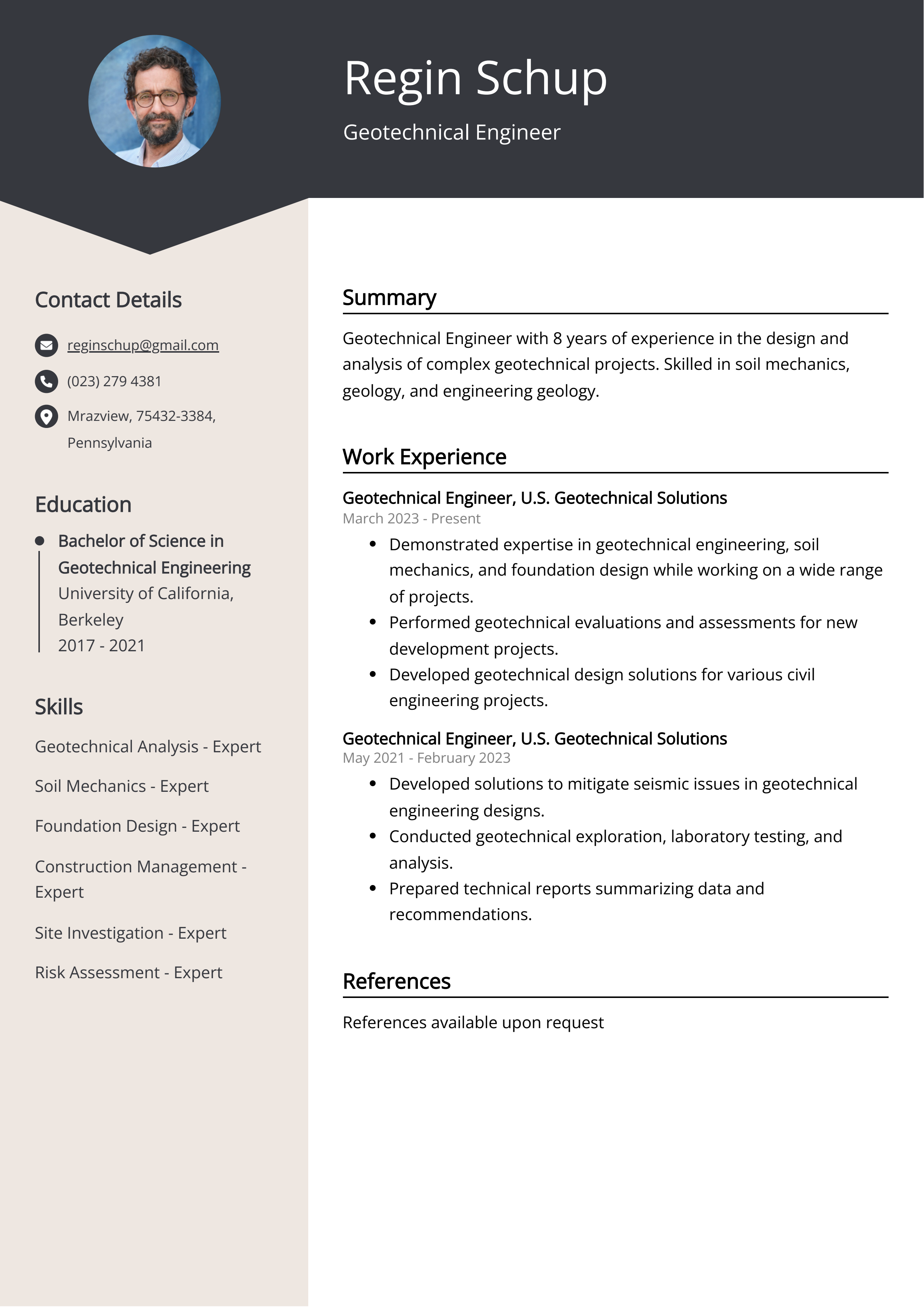10 Easy Facts About Geotheta Explained
10 Easy Facts About Geotheta Explained
Blog Article
Getting My Geotheta To Work
Table of ContentsOur Geotheta Statements5 Easy Facts About Geotheta ExplainedWhat Does Geotheta Mean?Facts About Geotheta RevealedWhat Does Geotheta Do?

They perform website examinations, collect examples, execute lab tests, and assess data to review the suitability of the ground for building and construction projects - Tailings Engineer. Based on their findings, geotechnical engineers provide referrals for foundation design, incline stability, retaining structures, and reduction of geotechnical hazards. They team up with other professionals, such as engineers, structural designers, and construction groups, to make certain that geotechnical considerations are integrated right into the overall task layout and execution
By evaluating the actions and properties of soil and rock, they can determine prospective geotechnical threats such as landslides, soil negotiation, or slope instability. Their knowledge assists protect against failings or crashes that can endanger lives and residential property. Right here are some detailed responsibilities and responsibilities of a geotechnical engineer: Website Investigation: Geotechnical engineers conduct site investigations to gather information on subsurface conditions.
They analyze the information to understand the residential or commercial properties and actions of the soil and rock, including their strength, permeability, compaction attributes, and groundwater problems. Geotechnical Evaluation and Layout: Geotechnical engineers examine the information accumulated throughout site investigations to evaluate the stability and viability of the site for building and construction tasks. They do geotechnical computations and modeling to evaluate elements such as bearing capability, negotiation, incline security, lateral earth stress, and groundwater flow.
The Greatest Guide To Geotheta
Structure Style: Geotechnical designers play an essential role in designing foundations that can safely sustain the designated framework. They evaluate the dirt conditions and lots needs to figure out the ideal structure kind, such as shallow foundations (e.g., grounds), deep structures (e.g (https://www.pageorama.com/?p=geotheta)., heaps), or specialized strategies like soil improvement. They think about factors such as settlement restrictions, birthing capacity, and soil-structure interaction to create ideal foundation designs
They examine building strategies, screen site activities, and perform area evaluations to validate that the style referrals are adhered to. If unanticipated geotechnical problems emerge, they examine the circumstance and give recommendations for removal or changes to the layout. Threat Assessment and Mitigation: Geotechnical engineers analyze geotechnical risks and dangers connected with the project website, such as landslides, liquefaction, or soil erosion.

Cooperation and Communication: Geotechnical engineers function closely with various other specialists included in a job, such as designers, structural designers, and building teams. Reliable communication and partnership are necessary to incorporate geotechnical factors to consider right into the total task layout and building process. Geotechnical engineers offer technical proficiency, solution inquiries, and make sure that geotechnical requirements are satisfied.
Some Ideas on Geotheta You Need To Know
Right here are some sorts of geotechnical designers: Foundation Designer: Structure engineers specialize in creating and assessing structures for frameworks. They analyze the dirt conditions, load needs, and website attributes to determine the most suitable foundation kind and layout, such as shallow foundations, deep structures, or specialized strategies like stack structures.
They evaluate the variables affecting slope stability, such as dirt buildings, groundwater problems, and slope geometry, and establish techniques to avoid incline failings and alleviate threats. Quake Engineer: Earthquake designers concentrate on assessing and creating structures to withstand seismic pressures. They analyze the seismic hazard of a website, assess soil liquefaction potential, and develop seismic layout criteria to guarantee the safety and strength of frameworks during earthquakes.
They perform field testing, gather samples, and examine the gathered information to characterize the dirt residential or commercial properties, geologic formations, and groundwater conditions at a website. Geotechnical Instrumentation Engineer: Geotechnical instrumentation designers concentrate on tracking and gauging the habits of dirt, rock, and frameworks. They install and maintain instrumentation systems that keep track of elements such as dirt settlement, groundwater degrees, incline motions, and structural variations to evaluate performance and offer early cautions of potential problems.
The Basic Principles Of Geotheta
They carry out examinations such as triaxial examinations, debt consolidation tests, direct shear examinations, and leaks in the structure tests to collect information for geotechnical evaluation and style. Geosynthetics Designer: Geosynthetics designers concentrate on the layout and application of geosynthetic products, such as geotextiles, geogrids, and geomembranes. They use these materials to boost soil stability, strengthen inclines, offer drain options, and control disintegration.
They often tend to be investigative people, which indicates they're intellectual, reflective, and investigative. They are interested, systematic, sensible, analytical, and rational. Some of them are likewise social, indicating they're kind, generous, participating, patient, caring, valuable, empathetic, sensible, and pleasant - Tailings Engineer.
In the office setting, geotechnical engineers use specialized software tools to execute calculations, create layouts, and analyze information. They prepare reports, testimonial task requirements, communicate with customers and team participants, and coordinate project tasks. The workplace setup provides a helpful setting for research, analysis, and collaboration with various other specialists associated with the project.
Some Known Details About Geotheta
They frequently see job sites to carry out website examinations, evaluate geotechnical conditions, and gather data for evaluation. These brows through entail traveling to various areas, occasionally in remote or tough terrains. Geotechnical designers may perform dirt tasting, conduct tests, and screen building tasks to make sure that the geotechnical elements of the project are check that being implemented appropriately.
Geotechnical designers likewise function in specialized geotechnical laboratories. In these centers, they perform experiments, execute tests on soil and rock examples, and assess the design residential or commercial properties of the products. Geotechnical laboratory engineers work extensively in these atmospheres, handling screening tools, operating instruments, and taping information. They team up with other lab personnel to make certain precise and reliable testing outcomes.
Report this page